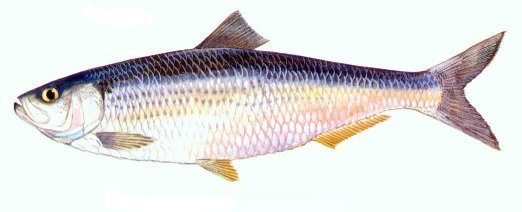Alosa aestivalis

BLUEBACK HERRING
Alosa aestivalis

Preferred Habitat: Coastal marine areas except during migration into fresh water rivers.
Common Size: Ocean run adults to 10 inches and Landlocked adults to 6 inches.
Food Habits: Copepods, insects, worms and fish
Spawning: Sexually mature blueback herring (approximately four years old) move into coastal rivers during March and April when the water temperatures reach the mid-50’s. The spawning site can be from the tidal zone to more than 100 miles upstream. The females release as many as 250,000 of their eggs in shoreline areas where the male fertilizes them. Upon spawning, the adults return to the offshore areas for overwintering. The newly hatched fish remain in the lower riverline area for several months before moving to sea.
Miscellaneous: The blueback herring is a marine species of the herring family that has an anadromous life history like American shad and pacific salmon. Eggs are deposited and young grow up in freshwater; juveniles migrate to the ocean and return to freshwater to spawn when mature. Like the American shad, North Carolina’s blueback herring range long distances before returning to the river where they were spawned. These travels take them all the way to Nova Scotia and back.
Although the blueback herring is generally only about ten inches in length and contains numerous bones, it is occasionally prepared for human consumption by smoking, canning, and pickling.